
伤口世界
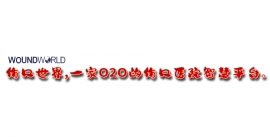
- 星期一, 30 10月 2023
Resistance training in patients with secondary lymphoedema: does it have any effect on functional and quality of life measures?
Andrea Damato, Aleksandra Rovnaya and Polly McGuigan
Abstract
The inclusion of resistance training in the care of patients with upper limb lymphoedema is an understudied developing concept. The study investigated the safety and effectiveness of adding a moderate/high intensity resisted exercise (RE) programme for 6 weeks on arm circumference, muscular strength and quality of life (QoL) measure in patients with breast cancer-related lymphoedema. This study included 35 patients with a history of breast cancer who were in phase two of their lymphoedema rehabilitation. They were assigned to either the intervention (n=18) or control (n=17) groups. The intervention consisted of resistance band exercises four times a week for 6 weeks. Limb circumference measurements, muscular strength, Disabilities of Arm, Shoulder, and Hand (DASH), Lower Extremity Functional Scale (LEFS) and Lymphoedema Quality of Life (LYMQOL) questionnaires were administered at baseline and at 6 weeks. After 6 weeks, the intervention group demonstrated statistically significant differences (p<0.01) in the DASH and LYMQOL scores. There was a significant change in UL and LL strength between both groups (p<0.05). Unexpectedly, there was a significant decrease in UL measurements in the hand, forearm, elbow and proximal arm in the intervention group (p<0.05). The results indicate that RE demonstrates a positive effect on arm function, symptoms and QoL without increasing arm volume in breast cancer-related lymphoedema.
Key words
Breast cancer, quality of life, resisted exercise
Andrea Damato is Physiotherapist, PhysioLympha. Aleksandra Rovnaya is Doctor, PhysioLympha. Polly McGuigan is Head of Department, Department for Health, University of Bath, Bath, UK. Declaration of interest: None.
Ethical approval: The study was approved by REACH (EP 20/21 103), University of Bath, UK and by the Russian Lymphology Association where the study was conducted.
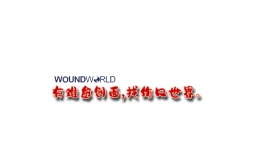
- 星期五, 27 10月 2023
The often-ignored importance of the lymphatics of the foot and legs: the sole of the lymphatic system!
Peta Tehan and Neil Piller
Peta Tehan is Lecturer in the Master of Wound Care,Department of Surgery, School of Clinical Sciences, Monash University, Victoria, Australia; Neil Piller is Director, Lymphoedema Clinical Research Unit, Department of Surgery, College of Medicine and Public Health, Flinders University, Adelaide, Australia
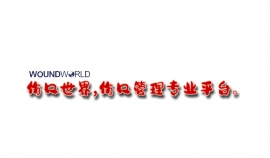
- 星期三, 25 10月 2023
Lymphatic drainage patterns in head and neck lymphoedema: A preliminary imaging study with indocyanine green lymphography
Amanda Pigott, Hiroo Suami, Andrew McCann and Megan Trevethan
Abstract
Head and neck lymphoedema occurs frequently after head and neck cancer treatment and causes physical and psychosocial disability. Imaging is not routinely used to diagnose or inform its conservative treatment. Indocyanine green (ICG) lymphography is used for these purposes in upper and lower limb lymphoedema.
Aim: The study aimed to explore the clinical potential of ICG lymphography in diagnosis and conservative management of head and neck lymphoedema.
Methods: Participants underwent a single examination with ICG lymphography. The tracer injection sites were determined by anatomic lymphatic territories. Presence of dermal backflow was used to diagnose lymphoedema. Imaging data were recorded using a bespoke audit tool to document lymphatic movement features and manual lymphatic drainage observations.
Results: Six participants underwent head and neck ICG lymphography. Lymphatic vessels and dermal backflow were visualised in all participants. Manual lymphatic drainage observations suggested all participants required very firm pressure to move the ICG dye through areas of dermal backflow, whereas only light pressure was required in areas with linear lymphatic vessel flow.
Conclusion: ICG lymphography can identify lymphatic structures and drainage patterns in the head and neck region and is considered a potential tool for diagnosis and conservative treatment planning for head and neck lymphoedema.
Key words:Head and neck cancer, lymphoedema, indocyanine green, fluorescence imaging
Amanda Pigott is Clinical Specialist, Department of Occupational Therapy, Princess Alexandra Hospital, Brisbane; and Honorary Research Fellow, University of Queensland, Brisbane, Australia. Hiroo Suami is Associate Professor, Australian Lymphoedema Education, Research and Treatment (ALERT) Program, Department of Human Sciences, Macquarie University, Sydney, Australia. Andrew McCann is Director, Department of Vascular Medicine, Princess Alexandra Hospital, Brisbane, Australia. Megan Trevethan is Clinical Specialist, Department of Occupational Therapy, Princess Alexandra Hospital, Brisbane; and PhD candidate, University of Queensland, Brisbane, Australia. Declaration of interest: None.
Acknowledgments: The authors acknowledge the participants who donated their time for this research.
Data availability: Contact corresponding author (该Email地址已收到反垃圾邮件插件保护。要显示它您需要在浏览器中启用JavaScript。) to discuss.
Funding : This work was supported by a grant from the PA Research Foundation 2019 Research Awards.
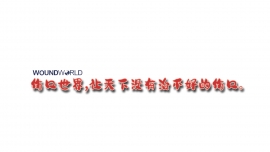
- 星期二, 24 10月 2023
Demonstrating the clinical efficacy of a multi-modality approach to managing various wound aetiologies
The article highlights the major challenge of limb amputation in the Caribbean and its effects on the patient’s quality of life, stressors on the family and the burden on the healthcare system. Four clinical cases are presented with various wound aetiologies and comorbidities; these patients were candidates for limb amputation. A reassessment of the traditional wound management approach paradigmatically shifted to a new strategy. This strategy includes clinically effective, easy-to-apply, and affordable products that help to reduce limb amputation, resulting in limb salvage.
Authors:
Larry G. Baratta and Yvonne Braithwaite Superville
Larry G. Baratta is International Medical Director, Chief Medical Officer - World Wide Wound Care, LLC;
Yvonne Braithwaite is Chief Executive Officer - Rovon Foot and Wound Care Clinic
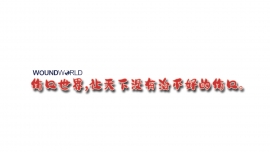
- 星期二, 24 10月 2023
Demonstrating the clinical efficacy of a multi-modality approach to managing various wound aetiologies
The article highlights the major challenge of limb amputation in the Caribbean and its effects on the patient’s quality of life, stressors on the family and the burden on the healthcare system. Four clinical cases are presented with various wound aetiologies and comorbidities; these patients were candidates for limb amputation. A reassessment of the traditional wound management approach paradigmatically shifted to a new strategy. This strategy includes clinically effective, easy-to-apply, and affordable products that help to reduce limb amputation, resulting in limb salvage.
Authors:
Larry G. Baratta and Yvonne Braithwaite Superville
Larry G. Baratta is International Medical Director, Chief Medical Officer - World Wide Wound Care, LLC;
Yvonne Braithwaite is Chief Executive Officer - Rovon Foot and Wound Care Clinic
- 星期五, 20 10月 2023
USE OF WOUND ANTISEPTICS IN ANTISEPTICS IN PRACTICE
MANAGING THE CHALLENGES AND RISKS OF INFECTION IN WOUND CARE
USE OF DIFFERENT ANTISEPTICS IN PRACTICE
WOUND CLEANSING AND TIPS FOR BEST PRACTICE
GUIDANCE AND PATHWAYS FOR ANTISEPTIC USE
THE IMPORTANCE OF AN ANTIMICROBIAL STEWARDSHIP-FOCUSED APPROACH
EXPERT PANEL
Harikrishna K. R. Nair (Chair), Professor and Head of the Wound Care Unit, Department of Internal Medicine, Kuala Lumpur Hospital, Malaysia
Beata Mrozikiewicz-Rakowska, President of the Polish Wound Management Association, Department of Endocrinology, Medical Centre of Postgraduate Education, Warsaw, Poland
Debora Sanches Pinto, Assistant Physician, Division of Plastic Surgery and Burns, University of São Paulo Faculty of Medicine Clinics Hospital, São Paulo, Brazil
Ewa K. Stuermer, Professor, Surgical Head of the Comprehensive Wound Center, Head of Translational Research, Department for Vascular Medicine, University Hospital Hamburg-Eppendorf, Hamburg, Germany
Johannes Matiasek, Associate Professor and Specialist in Plastic, Reconstructive and Aesthetic Surgery, Medizin am Kärntner Ring, Vienna, Austria
Johanna Sander, Head of Advanced Wound Care, 2 Military Hospital, Cape Town, South Africa
José Luis Lázaro-Martínez, Professor, The Complutense University of Madrid; Clinical Director, Complutense University Podiatric Clinic; Head of Diabetic Foot Unit, University Podiatric Clinic, Madrid, Spain
Karen Ousey, Professor of Skin Integrity, Director for the Institute of Skin Integrity and Infection Prevention, University of Huddersfield, United Kingdom
Ojan Assadian, Medical Director, Hospital Wiener Neustadt, Austria; Professor Emeritus, University of Huddersfield, United Kingdom
Paul J. Kim, Medical Director, University of Texas Southwestern Medical Center; Professor, Department of Plastic Surgery and Orthopaedic Surgery, University of Texas Southwestern, United States
Steven L. Percival, Professor (Honorary), University of Manchester, United Kingdom; CEO and Director, Biofilm Centre, 5D Health Protection Group Ltd, Liverpool, United Kingdom
PUBLISHED BY: Wounds International 108 Cannon Street London EC4N 6EU, UK
Tel: + 44 (0)20 7627 1510 该Email地址已收到反垃圾邮件插件保护。要显示它您需要在浏览器中启用JavaScript。 www.woundsinternational.com
© Wounds International, 2023
The meeting and this document have been supported by B Braun, Bactiguard, Schülke and Urgo Medical.
The views in this document do not necessarily reflect those of the sponsors.
How to cite this document: Nair HKR et al (2023) International Consensus Document: Use of wound antiseptics in practice. Wounds International. Available online at www.woundsinternational. com
